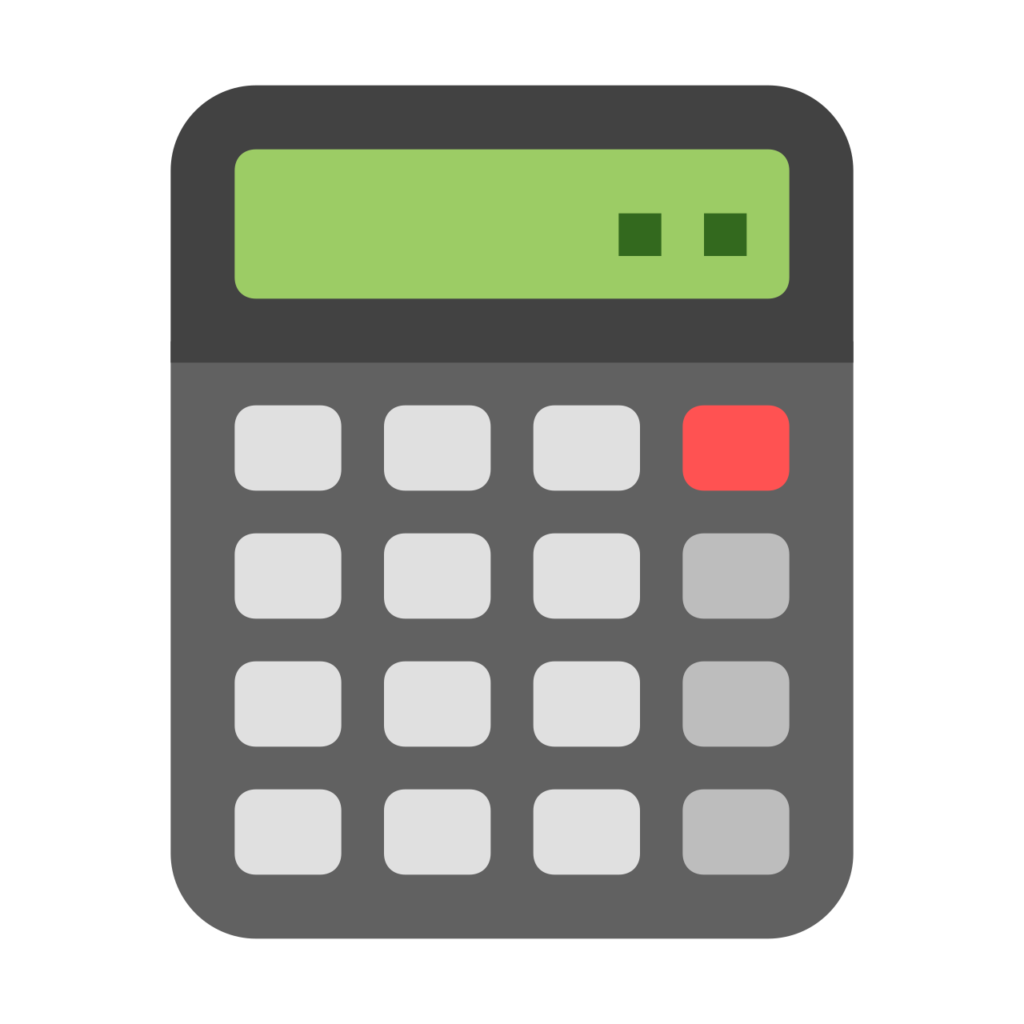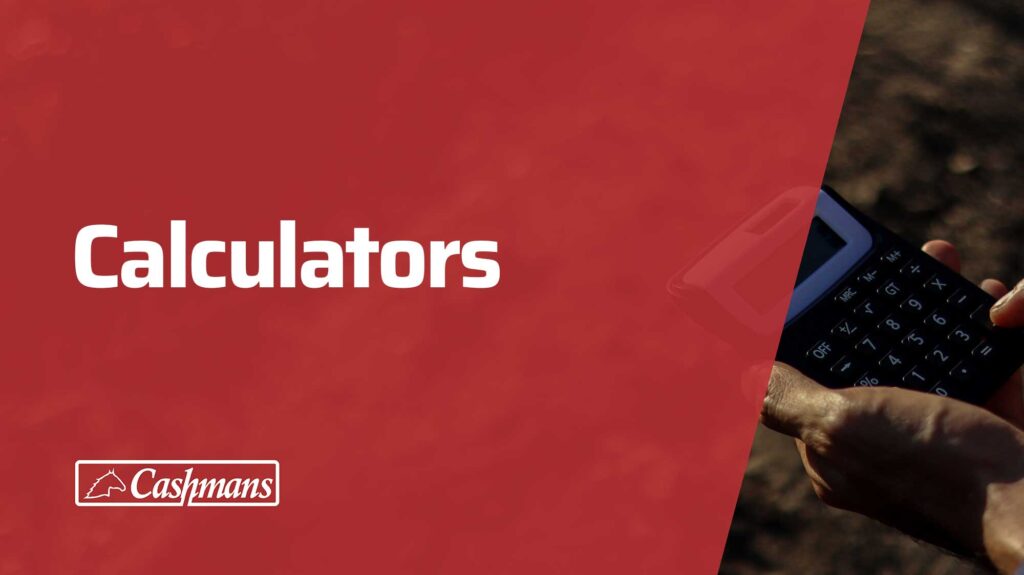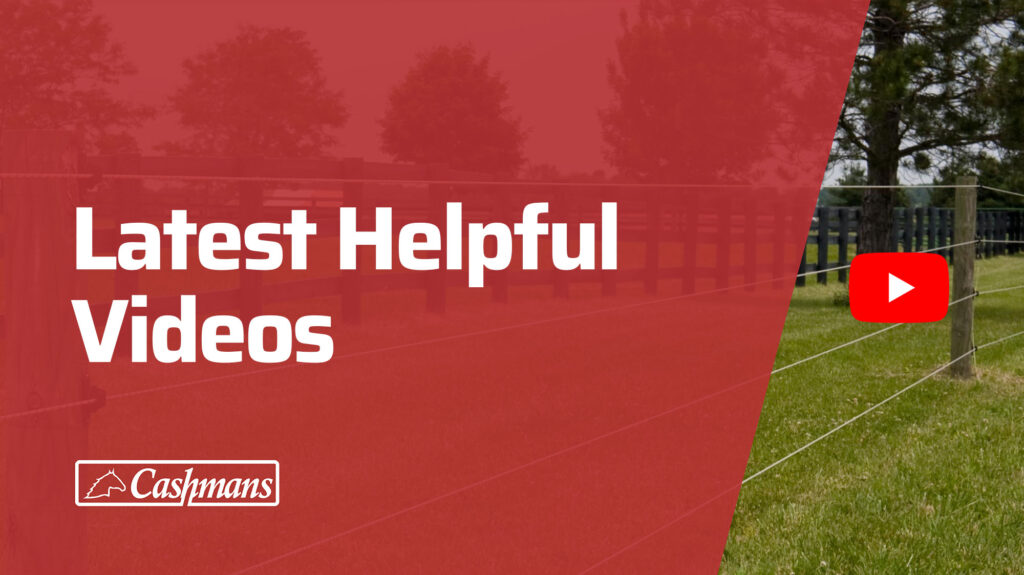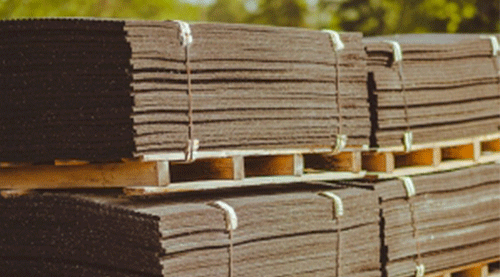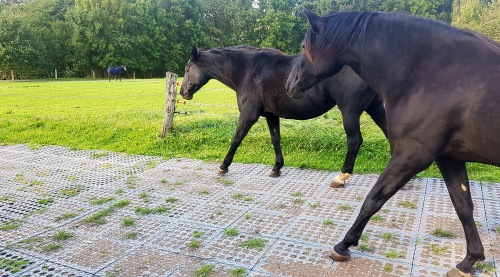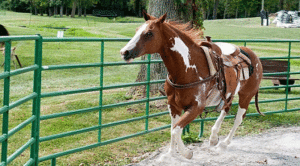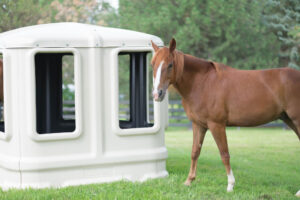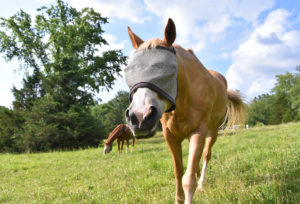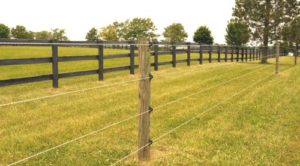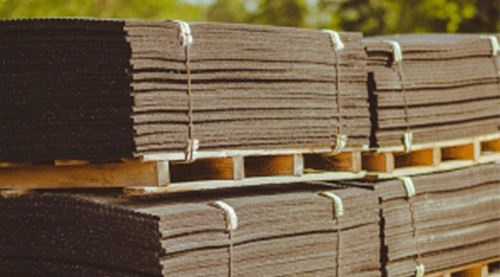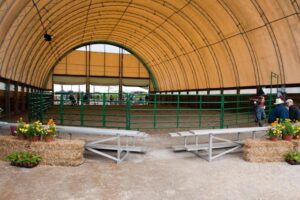
Round Pen Buyer’s Guide
By Christy Beaver – updated March 2025
It seems very few training tools pay for themselves like a round pen does. A high degree of training can be accomplished from the safety of the ground that can be transferred to under-saddle work. By working properly in a round pen, you can really gain a horse’s trust. You will want to establish yourself as the leader of the herd. Your horses should think of you as a safe and reliable leader. This connection needs to be created without creating fear; the goal is communication not domination.
Being mindful of your horse’s body language is going to make this process easier. Your horse will let you know if they are frightened, bored, or comfortable. You’ll want your horse to have their poll about level with their withers; this is typically a good sign that they are relaxed, but still paying attention to you. Pay close attention to your horse’s ears as well, as they will tell you a lot. With consistency, you’ll be surprised how subtle your cues can be and your horse still responds accordingly. With every training tool out there, you’ll want to make sure you are using the round pen correctly, so you don’t hurt your horse. If you would like to learn more about round pen training, contact a reputable trainer in your area.

Before you go out and buy a round pen, there are some important factors that you’ll want to take into account. First, remember safety matters. Safety is a huge factor that should carry some weight in your buying decision. Round pens come in a variety of different attachment systems, and panel shapes. Chain attachment panels are used more commonly for cattle enclosures, as they allow for 3-4 panels to be attached at one point. Chain attachments do not provide a lot of stability. An ‘I pin’ or ‘drop pin’ is a popular attachment in the light, economy style panels. It provides for an easy set-up and tear down, but a horse could easily get caught on the pin itself. Then, there is a ‘J Hook’ attachment. It provides a safer connection than the drop pin, but still poses a risk of a horse getting a halter or something caught on the pin. A ‘rodeo latch’ is the safest type of attachment that you can get. Rodeo latches have no sharp edges, allowing for a smaller gap between panels – creating a safer environment for a horse to get a halter or something stuck on. The connection is still very simple, but is strong enough for even the heaviest of panels. Most manufacturers put the rodeo latch on their best panels.
Now, let’s talk panel shape. There are two main shapes, rounded corner panels and squared corner panels. Rounded corner panels, or corral panels, aren’t recommended for horses. This is because when two corral panels are placed together, it creates a V where a hoof or even tack can get easily caught. The squared edged panels are what we call “horse safe” panels. This is because the panels, when placed together, are close together at the top to help prevent a horse, or tack, getting caught between the panels.
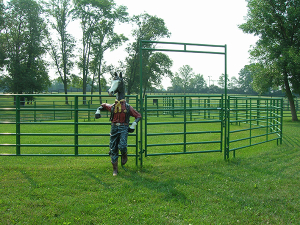
Second, remember strength matters. How you are using the space will also determine the strength of panel you will need. Will you be working older, or more broke horses? Breaking young horses, or maybe even occasionally containing cattle? We offer round pens from ‘economy’ to ‘super duty’ and everything in between. The strength of a panel is determined by its weight. An ‘economy’ panel only weighs around 40 pounds, where ‘super duty’ panels weigh around 120 pounds.
Third, remember size matters. A round pen can be bought in packaged sizes ranging from 40 to 80 feet in diameter. What you are going to be using the round pen for will determine the size of the round pen you require. If you’re just looking for a small area for a turn-out for a horse, you can opt for the smaller size such as a 40’. If you’re looking for an area to do basic ground work such longeing, a 50-foot-diameter is going to suit your needs. However, if you’re going to be doing more extensive training such as long lining or even riding and breaking young horses, experts suggest a 60-foot-diameter pen or larger.
If you buy a size and decide you need more space down the road, you are able to add on to the diameter of your round pen. Panels are offered ranging from 8’ to 16’ in length. Typical round pens are packaged together with 12’ panels, which is the most popular size. When buying a round pen using smaller panels, such as 8’ or 10’ lengths, the price per linear foot raises anywhere from 10-15%. When you get into the longer lengths, such as the 14 and 16-foot lengths, the panels get almost too heavy for one person to handle.
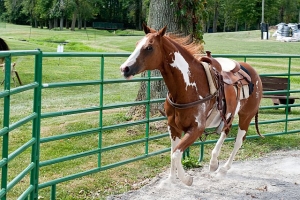
So you bought a round pen, and you’ve got it home…Now what? There are a few more things that you’ll want to consider. You’ll want to think about types of footing, footing depth, drainage, maintenance and dust control. You’ll want to carefully choose the location that you want to set up your pen in, considering these things. If you don’t have the large equipment to correctly prepare and compact your base, contact a local contractor. If drainage is a big issue in your area, you may want a mixed layer of #2 and #4 sized gravel as a base below your top dress, to encourage drainage. Contact your local quarry for more information on what is offered in your area. Drainage issues can also be helped by placing your round pen in the highest flat point on your property. You’ll want your round pen area sitting at least a foot above ground level for proper drainage.
Thinking about the type of footing, non silicon sand limestone mix is the most common footing and is relatively inexpensive. You’ll want an average of 2-3 inches of footing. You’ll want it deep enough to provide sufficient concussion protection, without putting too much stress on your horse’s tendons and ligaments. As you are thinking about the type of footing you’d like, keep in mind dust control. There are different types of sand additives, or rubber type products that cut down on dust. A dusty environment is health issues for horses and humans, so great footing or additives are an investment worth making. As far as your maintenance, that will be very dependent on the footing type you go with. You’ll want to make sure you keep the surface smooth, and free of ruts. One nice thing is you’ll be able to pull open a panel or two to use an ATV with a harrow, or other grooming equipment. Once you have your base put in, and your footing on top, it’s time to set up those panels! Once your pen is set up, it is time to get working on building your relationship with your horse(s)!


